Being caught up with the Temple render releases for now, I am back to my Historic Video series. Today takes us forward to the year 1888, and for the first time, the Manti Utah Temple. the video here shows the temple as it would have looked when completed, as well as other buildings representing the support structures built to help the workers in the construction effort. Historic photos show that these buildings remained on site for many years after the dedication.
The Myth of the Symbolic Door Hardware
Much has been said over the years about the unique hardware found through out the Manti Temple. Specifically, the door knobs, hinges, mortise locks, rosettes, escutcheons and backplates. Theories over the source of the designs run from Arabic to Egyptian to Masonic influences, depending on which source you read from.
The Doorknob
Hugh Nibly tells the story of his Grandfather, John Patrick Reid, who specialized in designing the door catches, hinges, and knobs.According to Brother Nibley, His grandfather designed all the Manti Temple door hardware. The following is his analysis of one of the doorknobs within the Manti Temple.
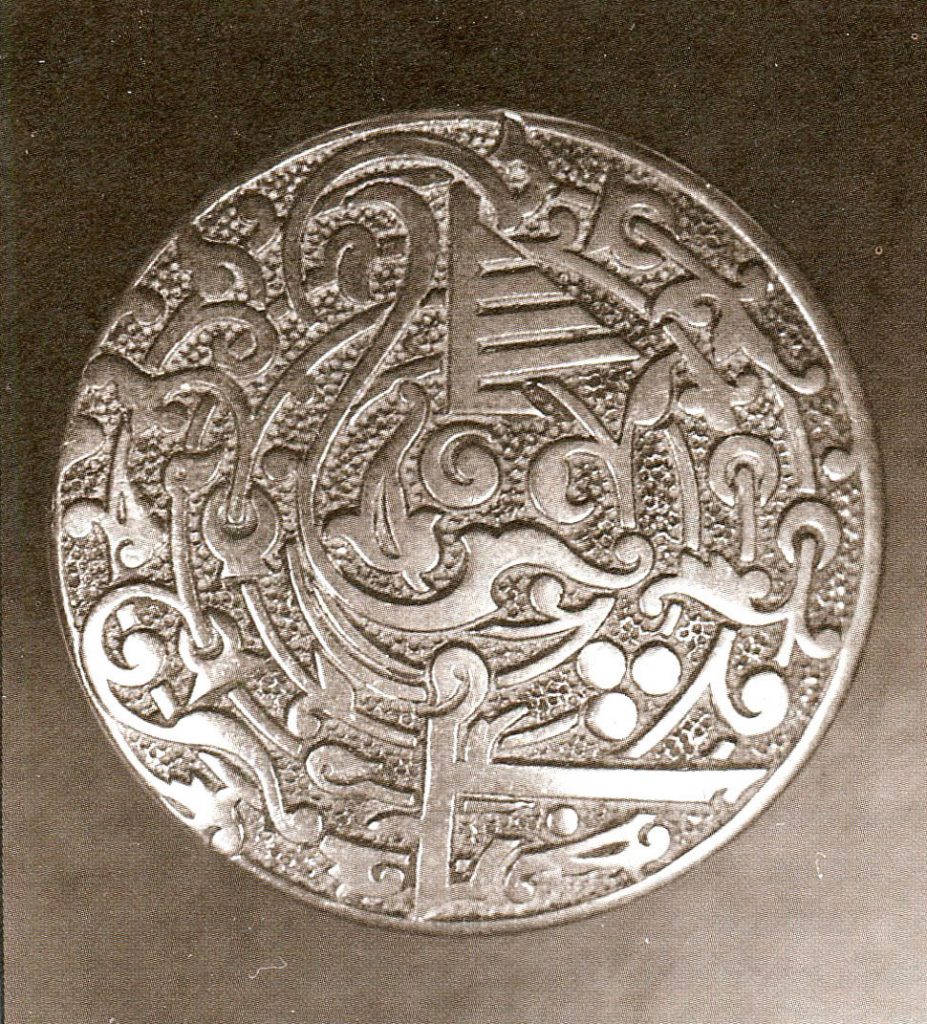
A circle is surrounded by botanical motifs and is circled by small rings. One of these rings instead of a simple circle or ring is an Ankh, or Crux Anasta, the best known of all ancient symbols, as it stands for life. (In the usual salutary title placed after the names of initiates, Ankh, Djed, Seneb, the Ankh symbol represents an umbilical cord and the three words mean health to the naval and marrow to the bones and strength, often in the royal tombs the last of the three is the Was-symbol which means, according to Gardnier, “power in the Priesthood.”) In this drawing the Ankh sign is at the top of the circle. A quarter of the way around, right next to the hole for the screw is the Egyptian Hetep symbol meaning peace and salvation. On the opposite side of the circle from the Ankh sign is the Shen sign, the personal seal and sign for eternity, one everlasting round.[1] Victor J. Rasmussen, The Manti Temple (Provo, UT: Community Press, 1988).
Source of the Doorknob
Now, all of the above may in fact be true, and from what little I know of Hugh Nibley, that is a distinct possibility. However, the pattern on the doorknob in question are taken from an illustrated page of the Quran, and the designs are Arabic in origin. Specifically, the design is found on Plate XXVII (27) of the book “Polychromatic ornament. One hundred plates in gold, silver, and colours, comprising upwards of two thousand specimens of the various styles of ancient, oriental, and mediæval art, and including the renaissance and the seventeenth and eigtheenth centuries” by Auguste Racinet.
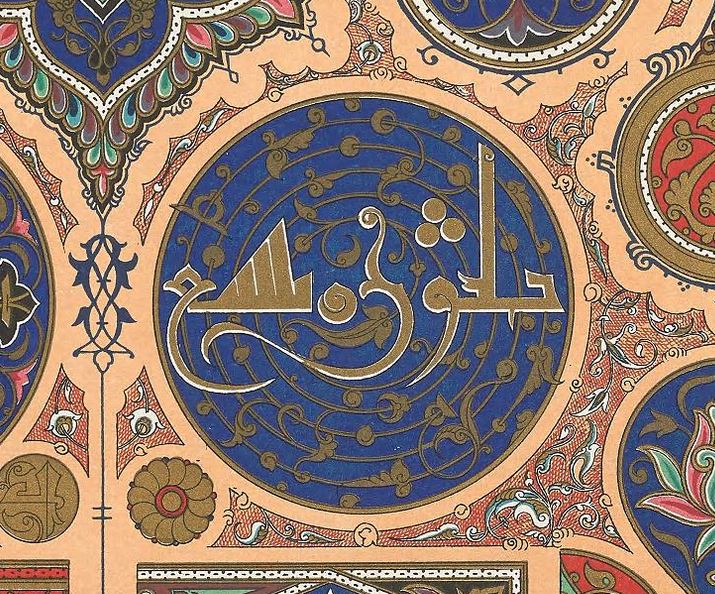
So then, what caused Reid to use a page from the Quran as his inspiration for the Doorknobs?
The True History of the Manti Temple Doorknobs
The answer is, he didn’t.
Because, sadly, John Reid did not design or manufacture the Manti temple Doorknobs. neither did any other of the pioneers who worked on the Manti Temple. In fact, if you reach around and feel the back of a Manti Temple doorknob, you will find there are marks on the backside of the doorknobs. If you could see those marks, you would find that those marks say “Russell & Erwin MFG. Co. New Britain Conn. U.S.A.“
West Doorknob
West doorknob of the temple (left) compared with the makers mark displayed via mirror (right.) (image flipped for readability.)
East Doorknobs
Photos of the west doorknob and manufacture’s marks, displayed via mirror. Note that in one photo a date can clearly be seen in the metal (“Date Jan 25 1870”.) This date, likely either the manufacture date or the patent date, shows that the design is older than the temple itself, as the temple groundbreaking was 7 years later.
By the time the Church was completing the Logan Utah Temple, the decision had been made to order many things as mass produced, factory made items via catalog orders. For Logan, at the very least, all the railings, balusters and newel posts came from a catalog. For the Salt Lake Temple, all of the wood trim work would be ordered from a catalog and shipped cross country via the now 23 year old railroad .
And so it was for the door hardware at the Manti Utah Temple. Each and every piece can be found within the pages of The Russell & Erwin Mfg. Co. Catalog for 1882. Finding a copy of the catalog, however, is a little more difficult.
References
| ↑1 | Victor J. Rasmussen, The Manti Temple (Provo, UT: Community Press, 1988). |
|---|

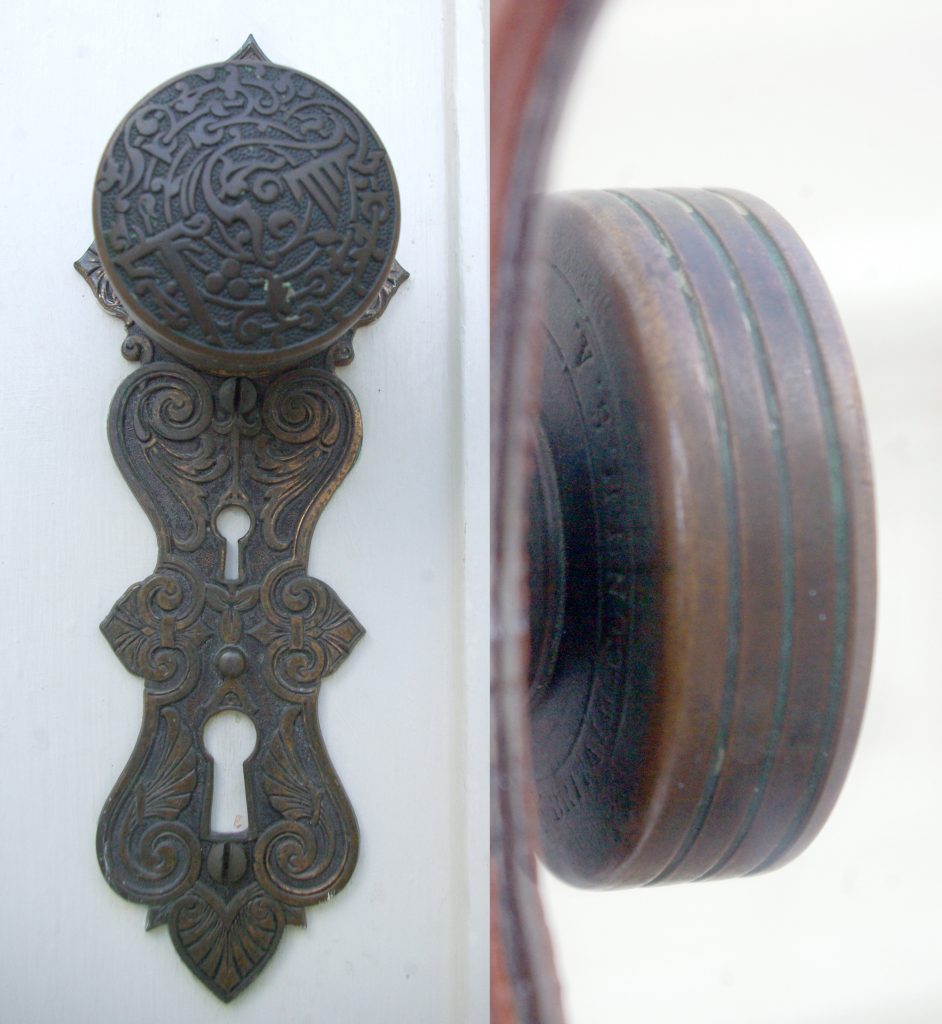
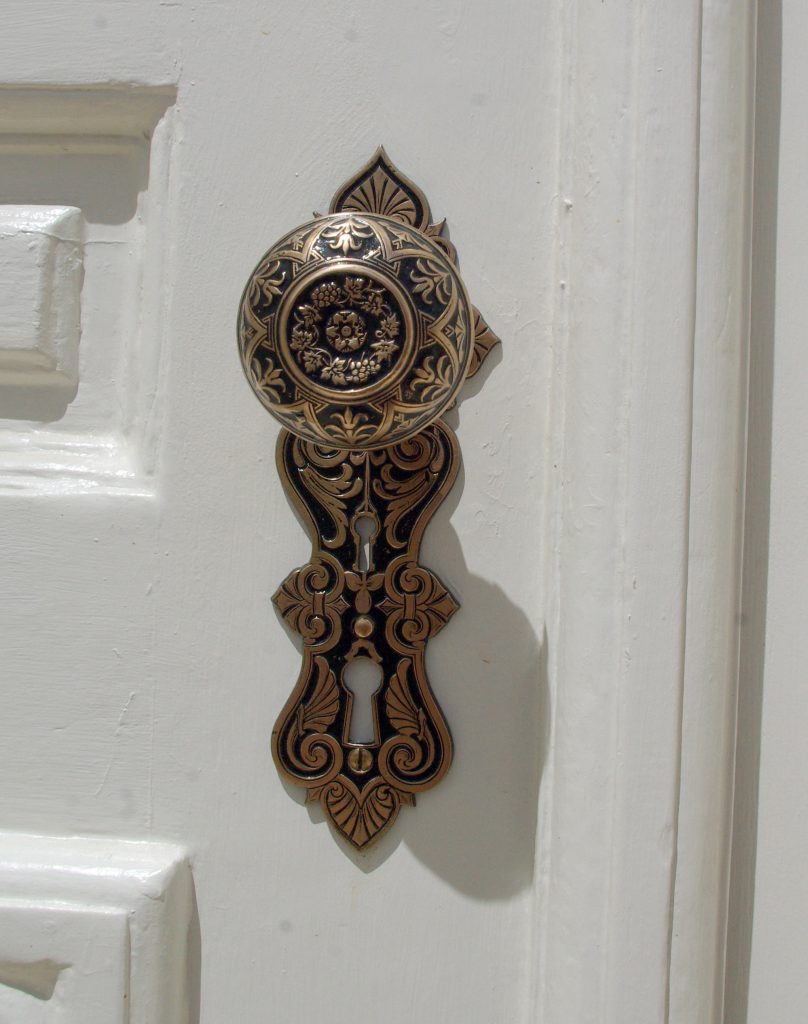
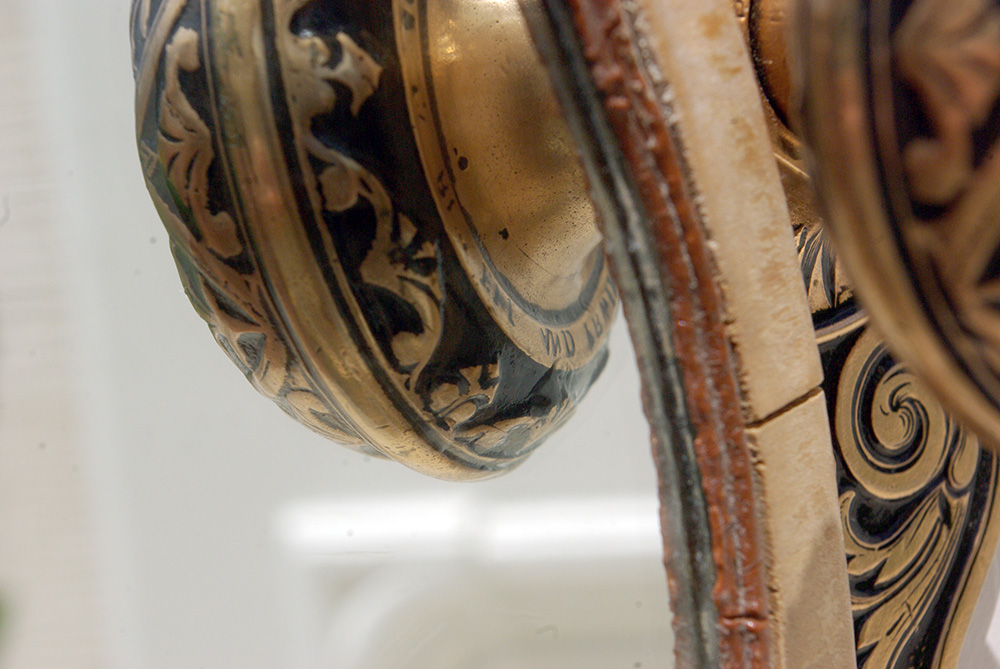
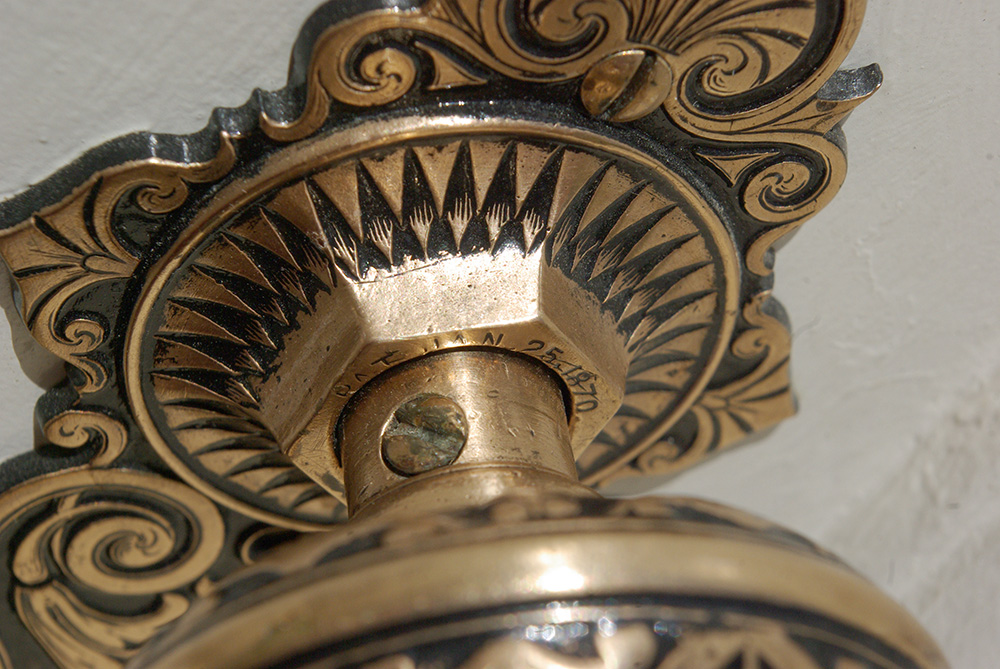
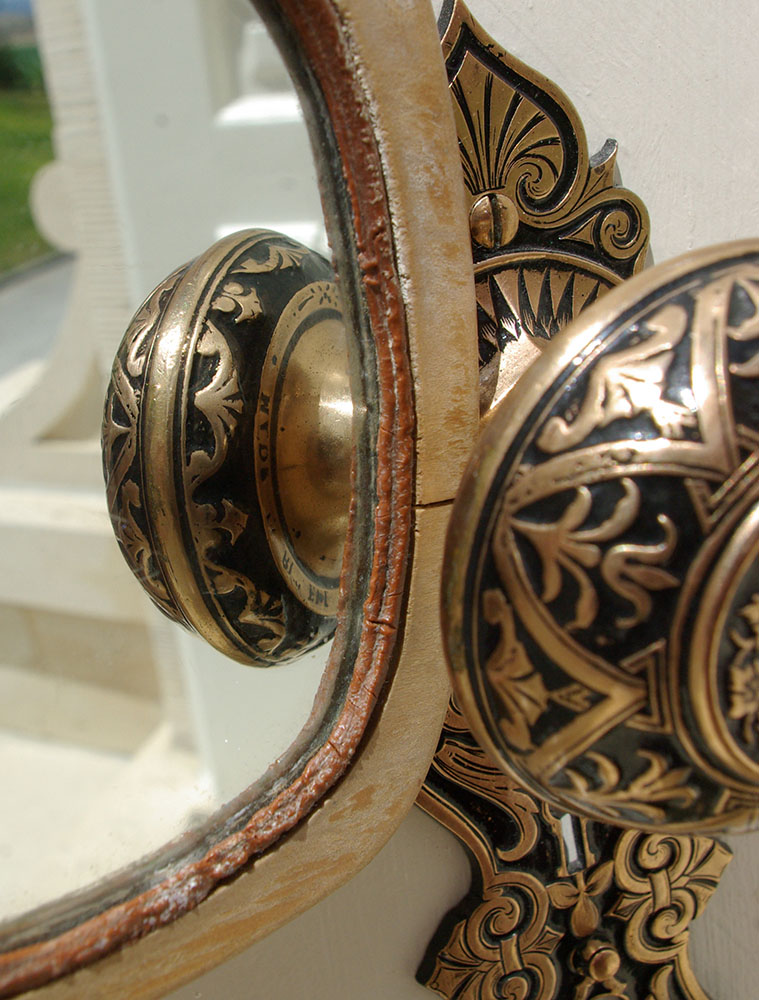
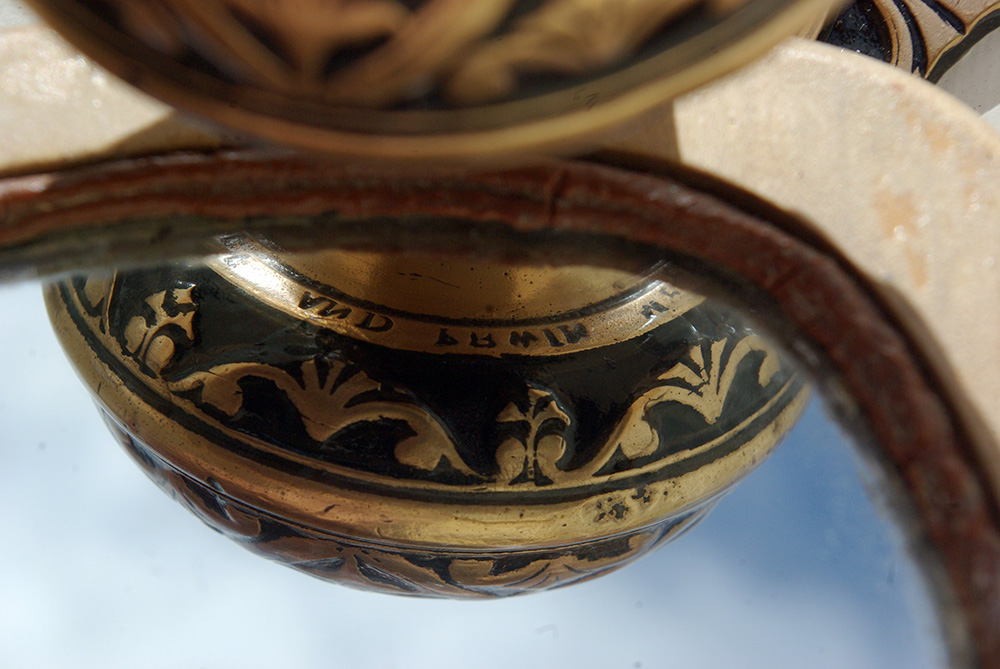
Thank you for all of this. The video is excellently done.
One of my ancestors was in charge of hauling all that dirt in to fill in the quarry and make it presentable. If you are interested I can dig up a few family stories for you.